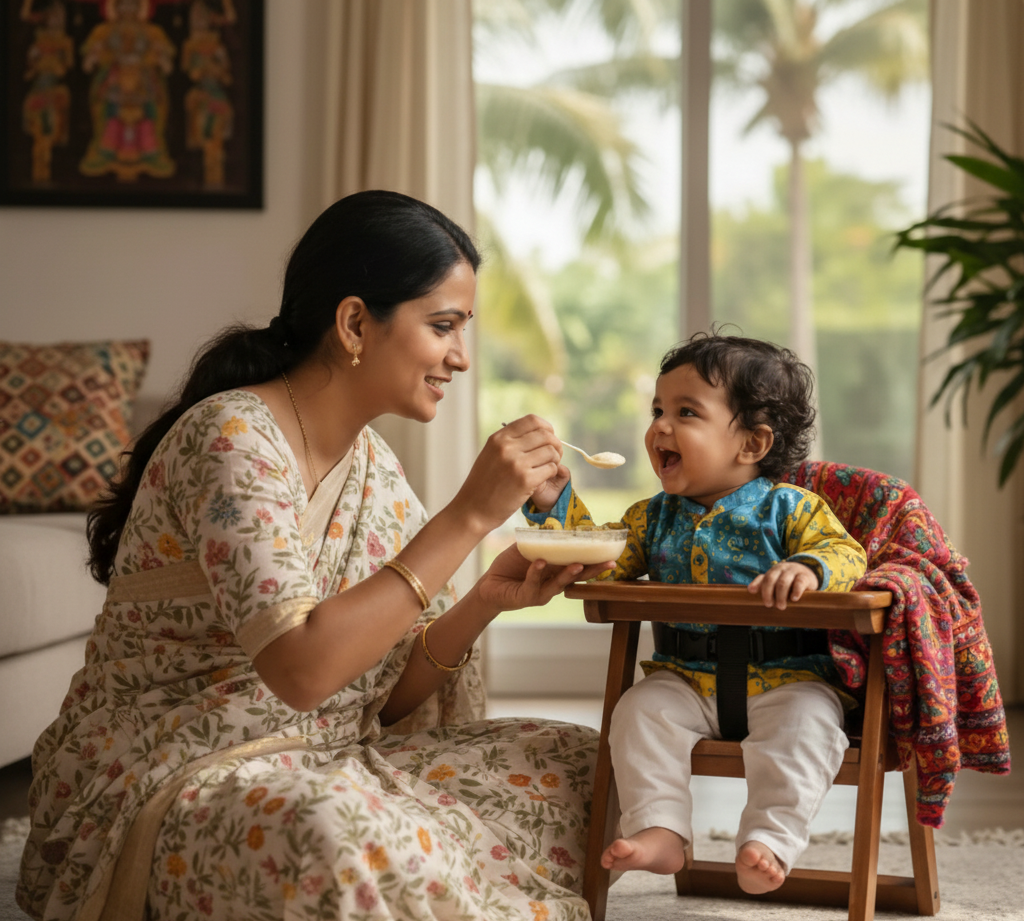How to Introduce Millets to Your Toddler — Simple Tips for Parents
💛 Why Millets Are Great for Growing Kids
Millets are among the most nutrient-dense grains nature offers. They’re rich in calcium, iron, protein, and fiber — exactly what little bodies need for steady growth and strong bones. Unlike refined cereals, millets are gluten-free and gentle on digestion, making them perfect for toddlers transitioning from purees to family meals.
In fact, many Indian households once relied on simple millet porridges as a baby’s first solid food — and it’s time to bring that tradition back.
👶 When Can You Start Millets for Your Baby?
Most babies can begin millet-based foods around 6–8 months, once they’ve started with other solids like rice or dal. Always check with your pediatrician before introducing new grains, especially if there’s a history of food sensitivities.
Start with single-grain porridges made from ragi (finger millet) or foxtail millet, as they are light and easy to digest.
🥣 Step-by-Step Guide to Introducing Millets
- Start with One Millet at a Time: Introduce a single variety like ragi for 3–4 days and observe for any reactions. Once your toddler accepts it well, move on to others such as jowar or little millet.
- Choose the Right Texture: Babies under 1 year prefer smooth, semi-liquid porridge. As they grow, gradually increase the thickness or offer soft dosa, upma, or millet pancakes.
- Make It Naturally Tasty: Mix millets with banana, dates, or breast milk to enhance flavor. Avoid sugar or salt before 1 year — sweetness from fruit is enough.
- Combine with Familiar Flavors: Blend millets with lentils, moong dal, or veggies for better taste and balanced nutrition (e.g., ragi–moong dal porridge or millet khichdi).
- Serve in Small Portions, Regularly: A few spoons daily help toddlers adjust to new textures and flavors without overwhelming their tummies.
- Rotate Millets Weekly: Each millet has a unique nutrient profile — rotating between ragi, bajra, foxtail, and little millet keeps meals interesting and balanced.
🌿 Benefits of Adding Millets to Your Toddler’s Diet
- Calcium & Iron Boost: Supports bone and blood health
- Better Digestion: High fiber for smooth tummies
- Long-Lasting Energy: Slow-release carbs keep them active
- Natural Immunity: Packed with minerals and antioxidants
- Allergy-Friendly: A safe option for wheat or gluten sensitivity
🧡 Common Mistakes to Avoid
- Introducing too many millets at once
- Adding sugar or processed flavorings
- Skipping hydration — millets are high in fiber, so toddlers need water or milk alongside
- Not soaking or sprouting the grains — soaking improves digestibility and reduces phytates
💡 Tip: Soak millets for 4–6 hours or sprout them to enhance nutrient absorption.
🍽️ Sample Meal Ideas
- Breakfast: Sprouted ragi porridge with mashed banana
- Lunch: Foxtail millet khichdi with moong dal and carrot
- Snack: Millet pancakes with dates purée
- Dinner: Little millet idli with homemade curd
🌾 Live Indianly’s Toddler Promise
At Live Indianly, we create ready-to-cook millet mixes inspired by traditional recipes — made from sprouted grains, with no preservatives and no refined sugars. Our blends like Sprouted Ragi Porridge and Whole Wheat Almond Mix offer parents convenience without compromising purity or nutrition.
Every spoonful carries the essence of Indian kitchens — pure ingredients, honest nutrition, and love.
💬 Final Thought
Introducing millets is more than a diet choice — it’s giving your child a foundation of lifelong wellness rooted in Indian wisdom. Start small, stay consistent, and let natural flavors shape healthy habits.
Because healthy beginnings build happy tomorrows — Live Indianly.





